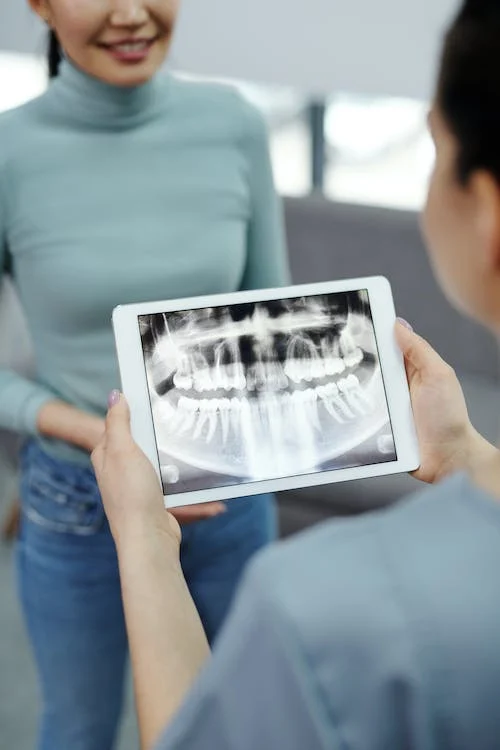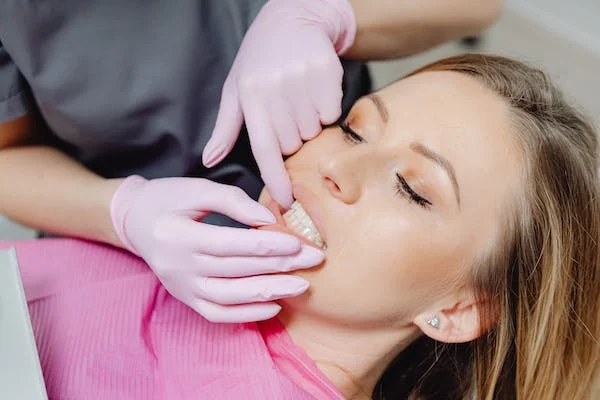Early detection can make all the difference when it comes to your health. Oral cancer screenings are vital to preventive dental care and can help dental care professionals identify and address potential issues before they become serious.
Our practice utilizes advanced techniques to provide thorough oral cancer screenings, helping you maintain optimal oral health and peace of mind.

Be vigilant about the following symptoms, and contact us if you experience any:
Many patients are surprised at the large amount of surface area that we examine during an oral exam. At every hygiene visit, we examine all the tissues of your mouth, including gums, cheeks, lips, tongue, and jaw.
It is just as important to have regular soft tissue screenings as it is to have a professional dental cleaning.
Oral cancer can afflict anyone, although tobacco users put themselves at a significantly higher risk than non-users. Chewing tobacco has up to 3000 different chemicals, including the same compounds used in pesticides and embalming fluid.
Cellular changes below the surface aren’t always detectable until they’ve advanced to a critical stage.Early detection and treatment of oral cancer can significantly increase your chances of a quick and complete recovery. The American Cancer Society reports that about 7,000 deaths result from oral cancer out of 30,000 cases diagnosed annually.
Oral cancer often develops silently, presenting no apparent symptoms in its early stages. Our dentists at North Texas Family and Cosmetic Dentistry utilize oral cancer awareness tactics so that even regular screenings allow abnormalities to be detected early, improving treatment outcomes and significantly reducing risks.
Certain factors increase the likelihood of developing oral cancer; these factors include:
If you face any of these risks, it’s crucial to prioritize oral cancer screening at our dental officers in Garland, TX, to safeguard your health.
An oral cancer screening is a quick and painless procedure that involves examining your entire oral cavity for abnormalities, including:
Using specialized tools, such as bright lights and sometimes dyes, our dentists ensure even the most minor irregularities are not overlooked.

We pride ourselves on offering compassionate care and state-of-the-art oral cancer screening. Here’s why we’re the top choice:
Proactively protect your health—schedule your oral cancer exam today!
Oral cancer screenings can save lives. By identifying abnormalities early, you’re taking a proactive step toward better health and peace of mind. Whether you’re scheduling your first screening or it’s time for a routine check-up, we’re here to provide expert care and support.
If we suspect any unusual changes in your mouth tissue, we may suggest a biopsy and microscopic analysis by a qualified lab.
Many other non-cancerous changes can occur in your mouth’s tissue, from oral warts to autoimmune lesions. Our doctors draw on their background in oral pathology to evaluate any abnormalities and determine the best course of treatment.
We understand tobacco holds strong addictive powers over even the most health-conscious people. If you’re determined to quit, we want to support you in your efforts. Talk to your hygienist or our doctors about the strategies and resources we have available so you can kick the habit.

If your dentist identifies any suspicious areas, they may recommend further tests, such as a biopsy, or refer you to a specialist for additional evaluation to confirm the diagnosis and determine the appropriate treatment plan.
Many dental insurance plans include oral cancer screenings as routine preventive care. However, coverage varies by provider, so it’s best to check with your insurance company or our office for specific details regarding your plan.
Monday: 7:30am – 4:00pm
Tuesday: 7:30am – 4:00pm
Wednesday: 7:30am – 4:00pm
Thursday: 7:30am – 4:00pm
Friday: Closed